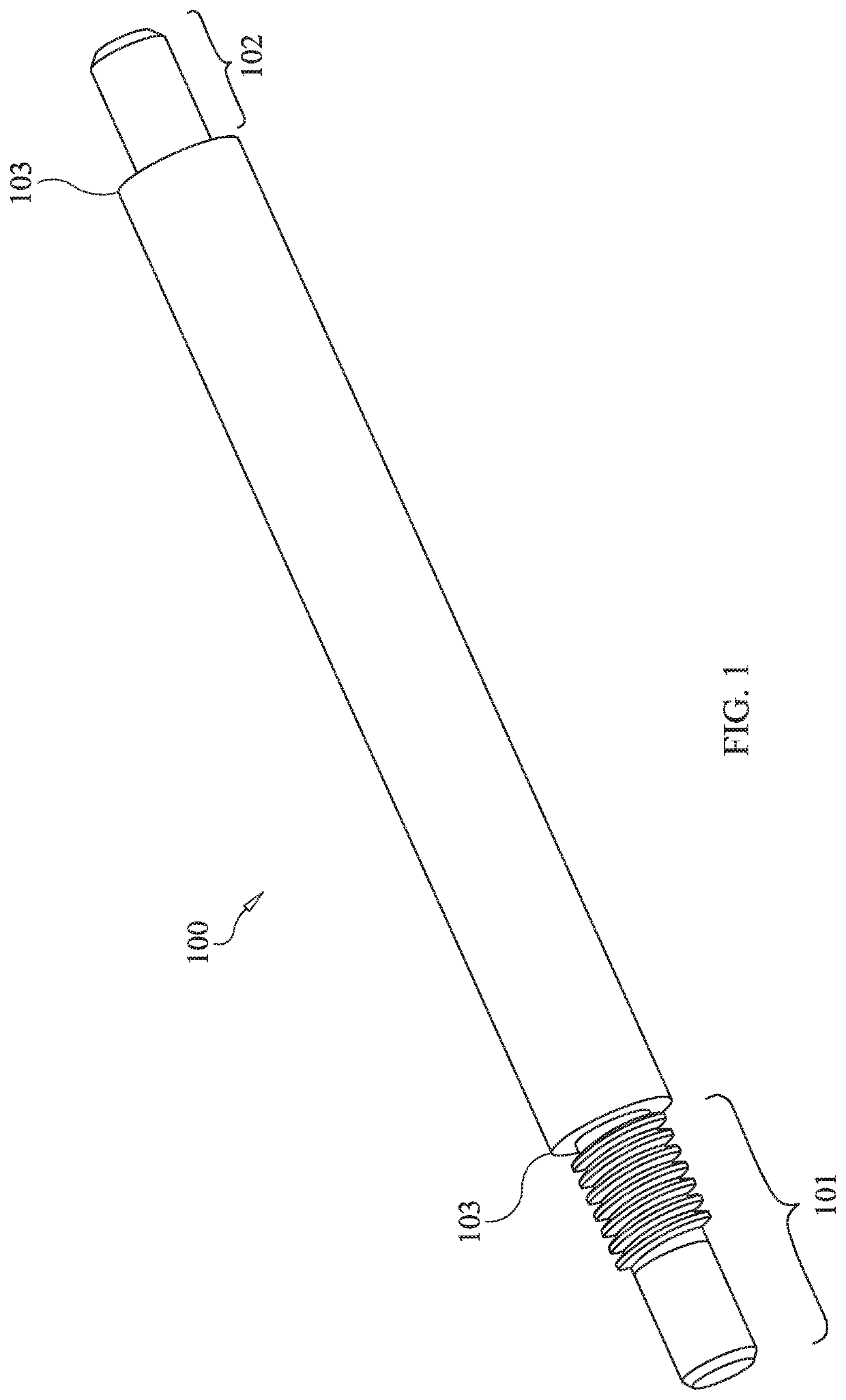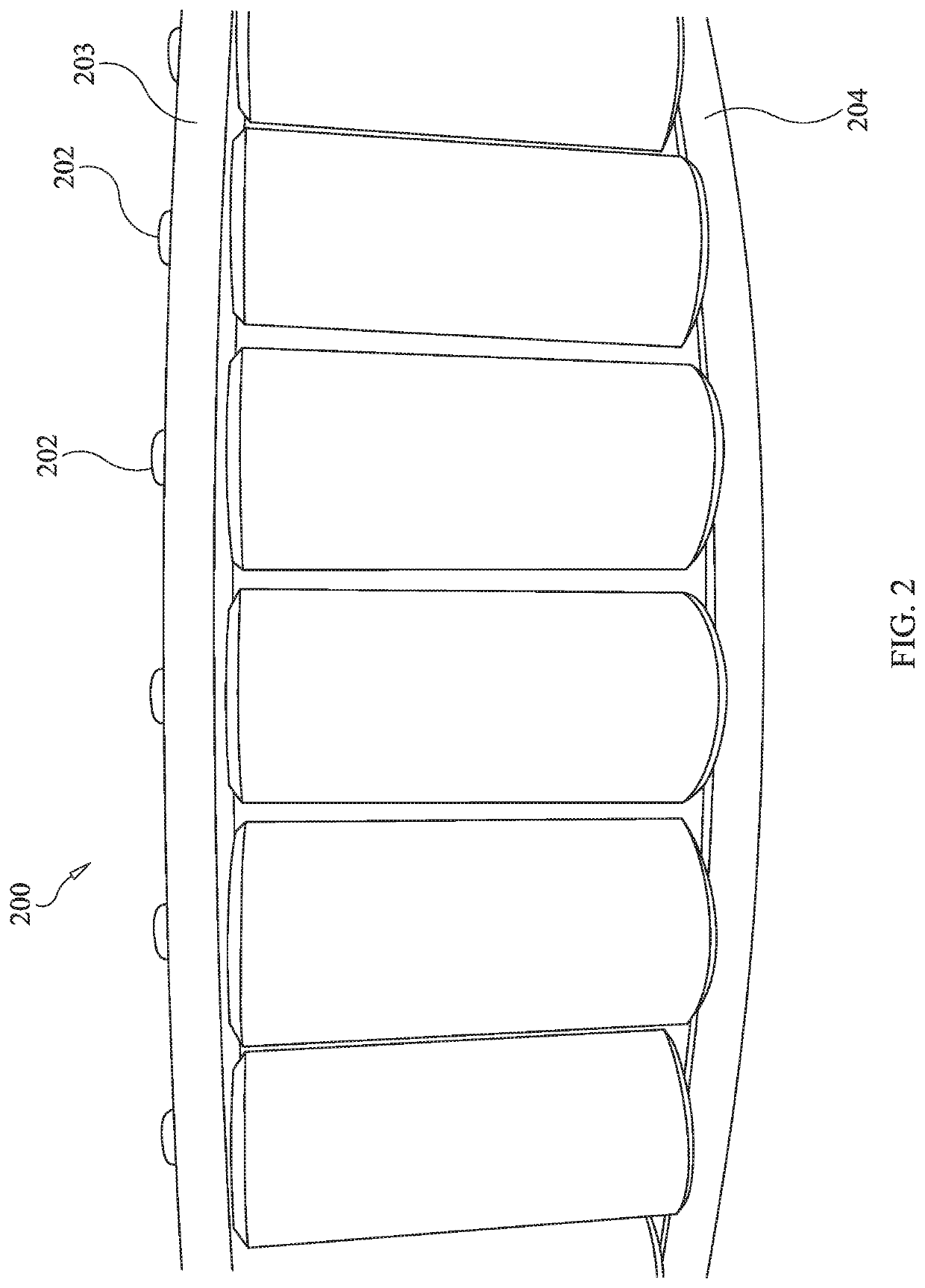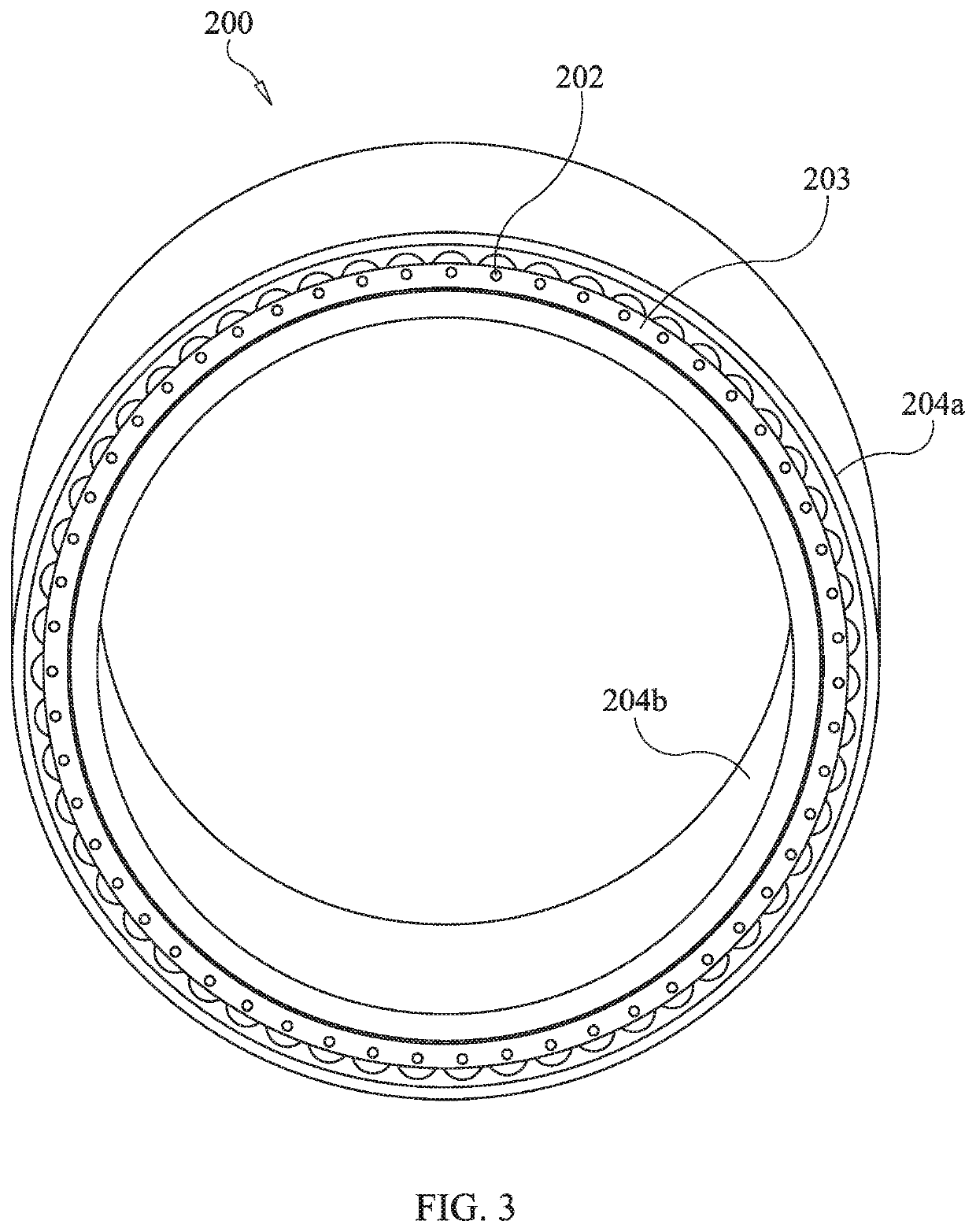Pinned cylindrical roller bearing
a cylindrical roller bearing and roller bearing technology, applied in the direction of bearings, shafts and bearings, bearing components, etc., can solve the problems of affecting the bearing configuration, and creating axial loads or amplifying existing axial loads
- Summary
- Abstract
- Description
- Claims
- Application Information
AI Technical Summary
Benefits of technology
Problems solved by technology
Method used
Image
Examples
Embodiment Construction
[0029]All roller bearings used for mechanical motors, such as pump motors, comprise a first (e.g., inner) and second (e.g., outer) circular race having cylindrical rollers disposed perpendicularly in relation to plane of the race. A traditional roller bearing comprises a cage machined to be close-fitting to align and guide the rollers to reduce skewing. Due to problems caused by axial forces on the rollers used in traditional roller bearings, improved (now conventional) roller bearings were manufactured to include pins disposed through the central longitudinal axis of the roller, and affixed to the cage by cold riveting or welding. These conventional pin roller bearings were also less than ideal because, although the axial forces on the rollers were reduced, forces were transferred to the bearing itself, or to the crankshaft, causing failure of the pump.
[0030]Unexpectedly, by threadingly engaging one end of a roller bearing pin to at least one of the two support rings disposed on ea...
PUM
| Property | Measurement | Unit |
|---|---|---|
| temperatures | aaaaa | aaaaa |
| temperatures | aaaaa | aaaaa |
| temperatures | aaaaa | aaaaa |
Abstract
Description
Claims
Application Information
 Login to View More
Login to View More - R&D
- Intellectual Property
- Life Sciences
- Materials
- Tech Scout
- Unparalleled Data Quality
- Higher Quality Content
- 60% Fewer Hallucinations
Browse by: Latest US Patents, China's latest patents, Technical Efficacy Thesaurus, Application Domain, Technology Topic, Popular Technical Reports.
© 2025 PatSnap. All rights reserved.Legal|Privacy policy|Modern Slavery Act Transparency Statement|Sitemap|About US| Contact US: help@patsnap.com



